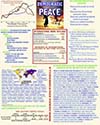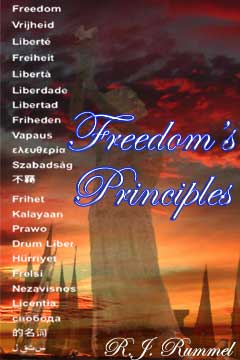[First published May 30, 2005] In his May 28, 2005, op-ed piece, “Give Peace a Chance,” in The New York Times (link here), John Tierney points out:
The new edition of “Peace and Conflict,” a biennial global survey being published next week by the University of Maryland, shows that the number and intensity of wars and armed conflicts have fallen once again, continuing a steady 15-year decline that has halved the amount of organized violence around the world.
Tierney is at a loss to explain this and first looks to an economist for an explanation, which is the there is less and less to gain economically from war. And then says:
Of course, wars are also fought for noneconomic reasons, but those, too, seem to be diminishing. The end of the cold war left the superpowers’ proxy armies without patrons, and the spread of democracy made nations less bellicose. (Democracies almost never fight each other.) Mr. Easterbrook calculates that the amount of military spending per capita has declined by a third worldwide since 1985. [Easterbook here]
He has pulled aside the shade and looked out the window, but since this is the only mention of the democratic peace in the whole article, he seems unsure, if not doubting, what he has seen. Again, I will provide some of the compelling evidence in a series of charts.
The following two charts show the rapid increase in democracies and liberal democracies since 1900.
The following chart plots the overall non-freedomness of the international system per year. This is the average rating of nations per year in their degree of freedom (the higher the rating, the less freedom).
The above are based on data from Freedom House (link here)
Now, lets look at the changes in regime type, as plotted by the “Peace and Conflict” study Tierney wrote his op-ed about (link here). See below.
The anocracies are akin to partially free, authoritarian, nations. Note that in these charts around 1990 is the critical year when the number of democracies spurt up and autocracies, those lest democratic, dive down in numbers. Now, lets see what happens to violence since 1946.
All forms of violence are headed down, and the crucial years are between 1985 and 1990, which is just the time when after a continual increase (see the first three charts), the number of democracies jump up. The way to understand this is that in the late 1980s, democracies achieved a critical mass in the international system, a tipping point for violence. Decades ago I predicted this point would be reached eventually, and now it has.
The last two charts taken together well substantiate President Bush’s Forward Strategy of Freedom, that it, foster freedom to foster peace. Do you think this might have something to do with the media largely ignoring the democratic peace in action, as shown here?
Link of Note
(Spring 2004) By John Mueller
He says:
It seems to me, though, that the most reliable restraints on violent behavior—both by individuals and by states—stem from human nature. For the most part, following the Rodney King prescription, we all—or almost all—actually do really want just to get along. There certainly is a quota of jerks out there, but most people most of the time are inclined to avoid conflict— certainly violent conflict. Their key goal is to live in peace and security, and they do this in part by adopting a live-and-let-live philosophy and by sharpening their skills from a very early age for determining whom to trust and befriend.7 By and large, their instincts predispose them not to belligerence or aggressiveness or even to stand and fight, but rather to flee conflict by removing themselves from threatening situations and moving from neighborhoods that are, or seem, dangerous. What is remarkable about most societies is how small in number, indeed how little in evidence, are the police forces required to maintain acceptable order. . . .
Thus, international war has declined remarkably since 1945 even while
international anarchy continues, effectively, to flourish: no one, surely, would confuse the United Nations or other international bodies with a Hobbesian
Leviathan.Experience suggests, then, that alarm about international “anarchy” is much
overstressed. Regulation is not normally required, and “anarchy” could become a desirable state.
So, the decrease in violence is due to human nature and learning about violence — it is a natural result of the anarchic international system.
Not only has the democratic peace brought a greater peace to nations, but it has also enabled all kinds of theories explaining this peace to flourish.







